daniela friedson-trujillo
XR/UX Design
Phase I VR scalable training and scenario development system
Related Projects
Attack of the Munchies︎︎︎
StarCARd︎︎︎
Related Projects
Attack of the Munchies︎︎︎
Cross-platform co-op game for AR and VR players of all ages
StarCARd︎︎︎
AR headshots and application using scannable image targets for mocap demo viewing
Simulation Training
VR Training System, Director of DesignThis project showcases the initial phase of a high-fidelity VR training platform, resulting in an intuitive interaction system, data-driven back-end architecture, and scalable design system to support new complex training scenarios.
Developing this complex training application required extensive research and development, from which I led discovery sessions with key stakeholders and SMEs. These sessions informed my decisions across project scoping, budgeting, and build planning for the 10-month production period.
Key pre-production deliverables included:
- User journey maps and storyboards
-
Procedural scenario development
-
Articulated interaction systems
- Asset planning for complex custom models, sound efffects, 2D and 3D animations, diagenic interfaces, and rope physics
- Asset naming conventions



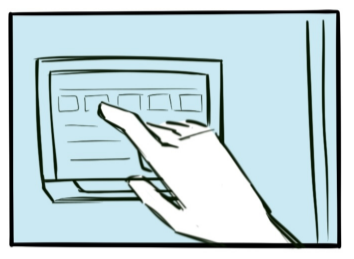

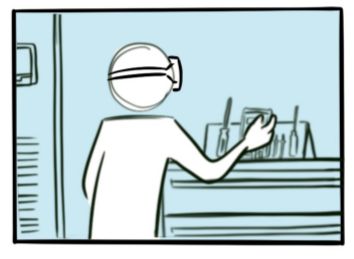
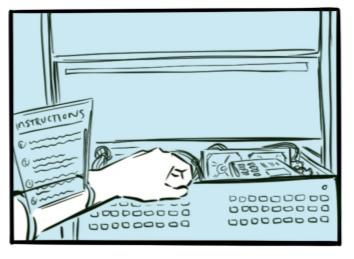
Initial storyboards showing the sequence of events (top-right to bottom left) from the user entering the locker room, selecting PPE, initiating the training simulation, and checking their wrist-UI for further instructions.
After distilling key objectives from the stakeholders, we produced three fundamental interaction scenarios to support their needs efficiently and effectively; 1) on-boarding and safety practice, 2) component familiarization, and 3) procedural and gamified training.
︎︎︎ 1. On-boarding and safety practice
I identified that key users would come from a variety of ages, backgrounds, and subsequently would not necessarily be familiar with virtual reality technology. Additionally, stakeholders communicated the importance of ensuring proper safety procedures were also being simulated. I found that there was an opportunity to combine these two objectives in the initial Locker Room scene.


Custom safety equipment, modeled and optimized for VR
In the real-world, locker rooms serve as a relaxed environment where many begin their workday. In one area of the room, we placed a small cart with a selection of objects a new user could experiment interacting with, in order to prepare for the types of object interactions they would interface with in the procedural training.
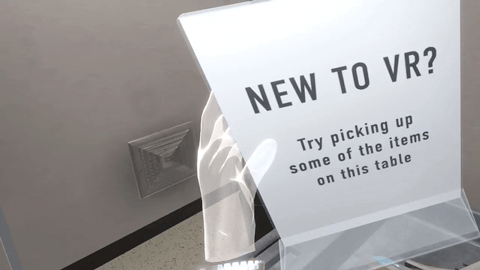
On the other side of the room, we naturally provided lockers with a selection of safety equipment for the users to chose from. Users would refer to a whiteboard in the room as a diagenic interface for training selections. If a user wanted to enter a training that required specific safety equipment, equipment specifications would be listed below and the scenario would only become enabled for selection upon compliance with the proper PPE.


Diagetic interface for training selection. (Left) Close-up of training description, disabled button, and realistic poster showing proper safety eqipment necessary. (Right) Enabled training selection with checkparks showing proper PPE has been selected, and another enabled training [not requiring safety equipment].
︎︎︎ 2. Component familiarization
Another important objective was to support users from all levels of mastery; some users would be interacting with our digital twin assets before ever interfacing with their real-world counterparts, while others would simply be re-familiarizing themselves.
To support both users, we created a training where users could simply examine some of the complex components we had modeled. For this exercise, we found it would be beneficial to prioritize cognitive load reduction, so users could focus on model in fron of them and not be overwhelmed with a hyper-realistic environment.
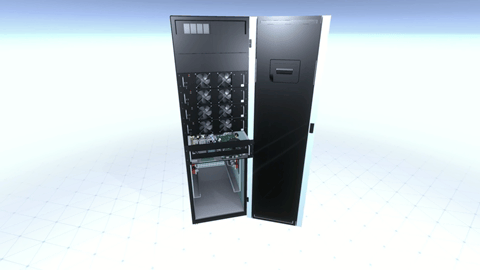 Exploded view of complex eqipment for component familiarization
Exploded view of complex eqipment for component familiarization︎︎︎ 3. Procedural gamified training
A tremendous effort during this production period was on building out the gamified training exercise. The team decided to build out a linear training system, in which users would not be able to complete “incorrect” actions, and instead would be encouraged to follow step-by-step instructions. In this system, we predicted the users would need to reference each step in the exercise during their first run. Each time a user checked an instruction, or “hint”, it would be recorded. Users would be encouraged to practice the training over and over again, gradually reducing the number of “hints” being referenced, until ultimately they could preform the entire procedure by memory and without any recorded “hints.”
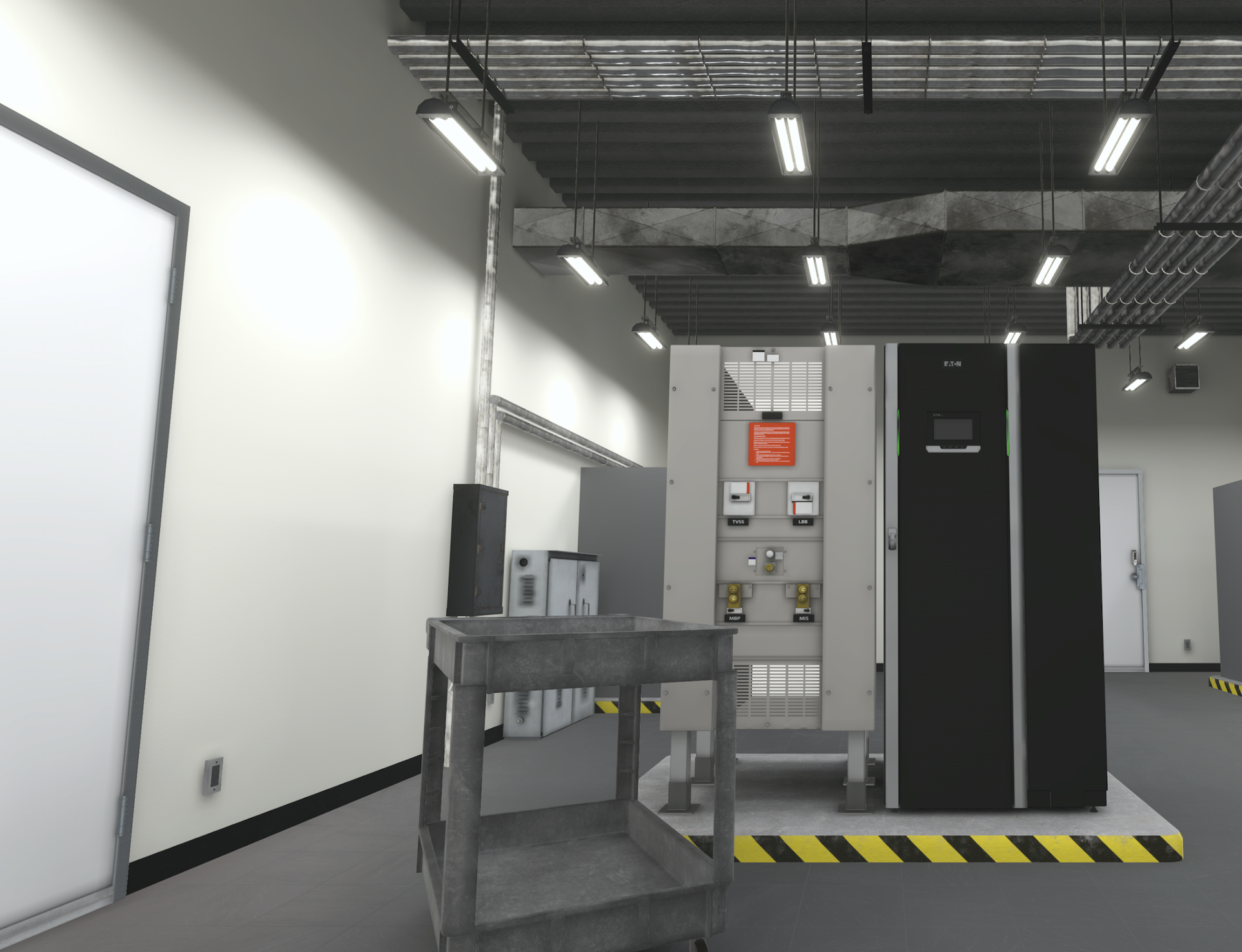 Environment for training scenario
Environment for training scenarioThe benefits of this training model were:
- Simplified architecture would allow our team to efficiently add on more training scenarios as needed
- Prevent any opportunity for users to pick up bad habits, from previously “incorrect” actions
- Facilitate standardized procedures across system of users (stakeholders mentioned that current practices resulted in varying procedures by region/instructors)
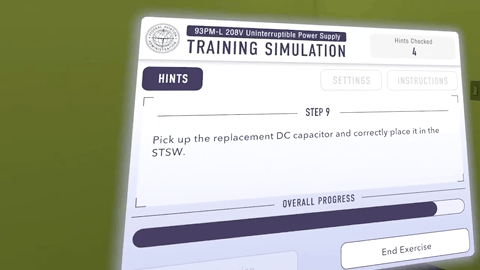
Wrist interface showing the final step in training procedure, leading to user action and progress completion.
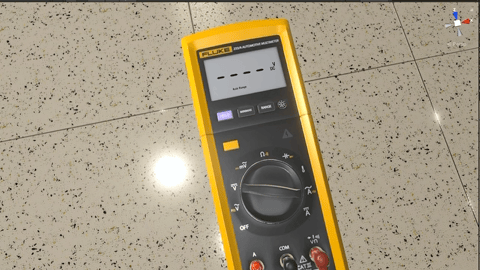
Interface animation on custom modeled tool for training exercise
︎ daniela@badguy.studio